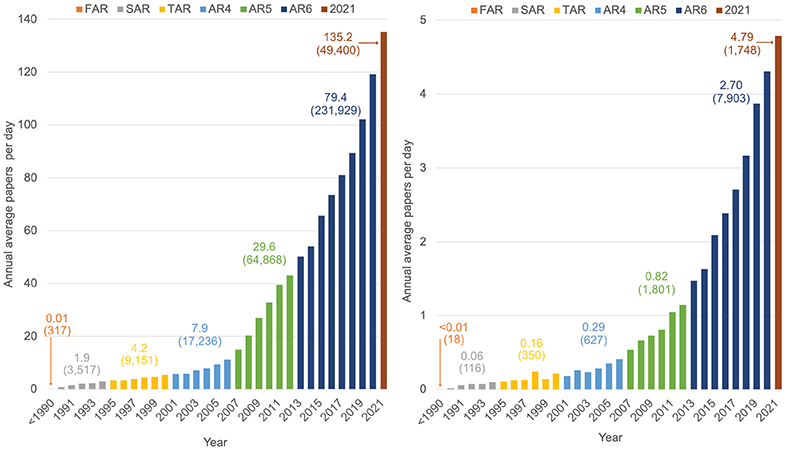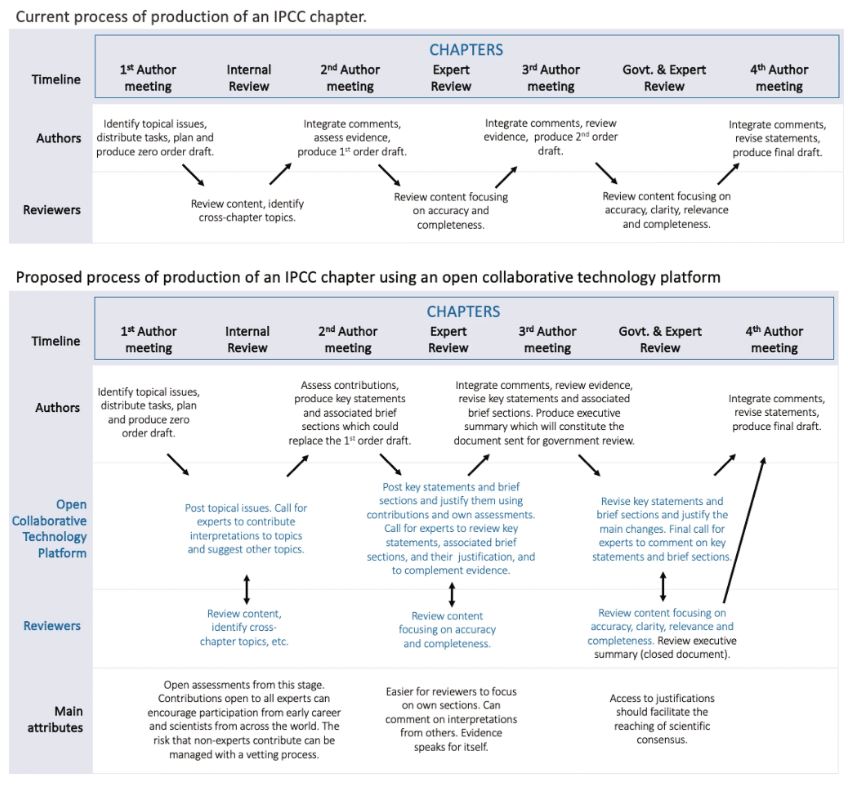A Collaborative Technology Platform to Support International Assessments
ScienceBrief is a collaborative web platform which was developed and used to help make sense of peer-reviewed publications and keep up with science.
ScienceBrief was created by a team at the Tyndall Centre for Climate Change Research at UEA. Its focus was on supporting a good and up-to-date understanding of climate change science in the media and political agenda.
The experience with ScienceBrief has demonstrated the role that collaborative technology platforms can potentially play in supporting major scientific assessments, such as the IPCC or IPBES.
Topics
ScienceBrief has focused on the carbon cycle and on extreme weather events. Under the ‘Critical Issues in Climate Change Science’ topic, we developed a series of Briefs covering wildfires, carbon-climate feedbacks, tropical cyclones, extreme rainfall, Arctic warming, marine heatwaves and international climate advisory boards. To summarise the evidence, we published a series of briefing notes, called ScienceBrief Reviews, that explain the latest scientific understanding on each of those issues. These provide timely analysis of issues under media scrutiny and were written by experts in the field actively researching the details discussed; they can be accessed from the Tyndall Centre website.
"ScienceBrief is the only tool we know that was designed to visually map out scientific knowledge in a way that highlights consensus and controversies, as well as deep diving all the way to the underlying papers. ScienceBrief bridges a gap between academia and the wider public. ScienceBrief provides scientific research with a modern approach. It’s continuously updatable, because science constantly moves forward.” Anthony De-Gol, ScienceBrief Technical Director and Platform Architect.
Challenge
With around 2.5 million scientific papers published every year, it’s challenging for scientists to share and gain insight from growing volumes of complex and sometimes conflicting information. During the IPCC’s sixth assessment report cycle, over 230,000 scientific papers were published mentioning climate change or global warming, averaging around 80 publications per day for author teams to evaluate.

Indicative exponential increase in climate change publications. Publications mentioning “climate change” or “global warming (left)” and those also mentioning “extreme rainfall” or “heavy precipitation” (right) plotted as cumulative annual average. FAR/SAR/TAR/AR4/AR5/AR6 = First/Second/Third/ Fourth/Fifth/Sixth Assessment Report of the IPCC. Data source: ISI Web of Science. Figure reproduced from De-Gol et al (2023), 'Broadening scientific engagement and inclusivity in IPCC reports through collaborative technology platforms', NPJ Climate Action, Springer Nature, published under a Creative Commons Attribution 4.0 International License.
Solution
An online collaborative tool, ScienceBrief has supported scientists from any geography or career stage, to share their insights with the world. “Briefs” on ScienceBrief have been designed to collate high-quality evidence informing the latest understanding on emerging issues in climate change science. The explorer graphically visualises the latest scientific consensus, identifying controversies and remaining research requirements. It’s readily updatable with observations and understanding of how the Earth’s climate operates, and how it is impacted by human activities.
Screenshot of the Explorer tool that visualises scientific consensus among published evidence (each octagon represents a journal paper positioned on the horizontal axis by the strength of (dis)agreement with the Brief and on the vertical axis by publication date).
Integration of a collaborative technology platform, designed specifically for the IPCC, within the established process of author meetings, review and approval meetings, would enable a consistent and transparent system to assess the evidence relating to each chapter, or sub-chapter. Such a platform could constitute part of a formal call for evidence, inviting expert researchers to upload their relevant journal articles and interpret key insights. In doing so, this would enable IPCC authors to focus upon the assessment of evidence, and spend less time on the synthesis part of their work. The use of a collaborative technology platform could first be tested at the scoping stage, provided the technical developments can be planned ahead of time.
The main attributes of the proposed process are described at the bottom. All processes in blue are publicly visible, whereas those in black are not, though results are subsequently made available. This figure shows the current process of production of an IPCC Chapter, and how it could be adapted to make use of a collaborative technology platform. Figure reproduced from De-Gol et al (2023), 'Broadening scientific engagement and inclusivity in IPCC reports through collaborative technology platforms', NPJ Climate Action, Springer Nature, published under a Creative Commons Attribution 4.0 International License.
Acknowledgements
ScienceBrief was initiated with funding support from the UK Natural Environment Research Council and has been funded by the European Commission CRESCENDO, 4C and VERIFY projects. The authors thank Bob Watson, David Cutting, Asher Minns, Peter Liss, Piers Forster, Jason Lines and Andrew Lovett for advice and/or technical assistance at the various stages of development of the ScienceBrief platform, and all scientists who contributed to related content, in particular as Editors and Advisory Board members.
Discover more
Research
more...An extensive description of the development and operation of the ScienceBrief platform and vision for how collaborative technologies can support international scientific assessments.

)
